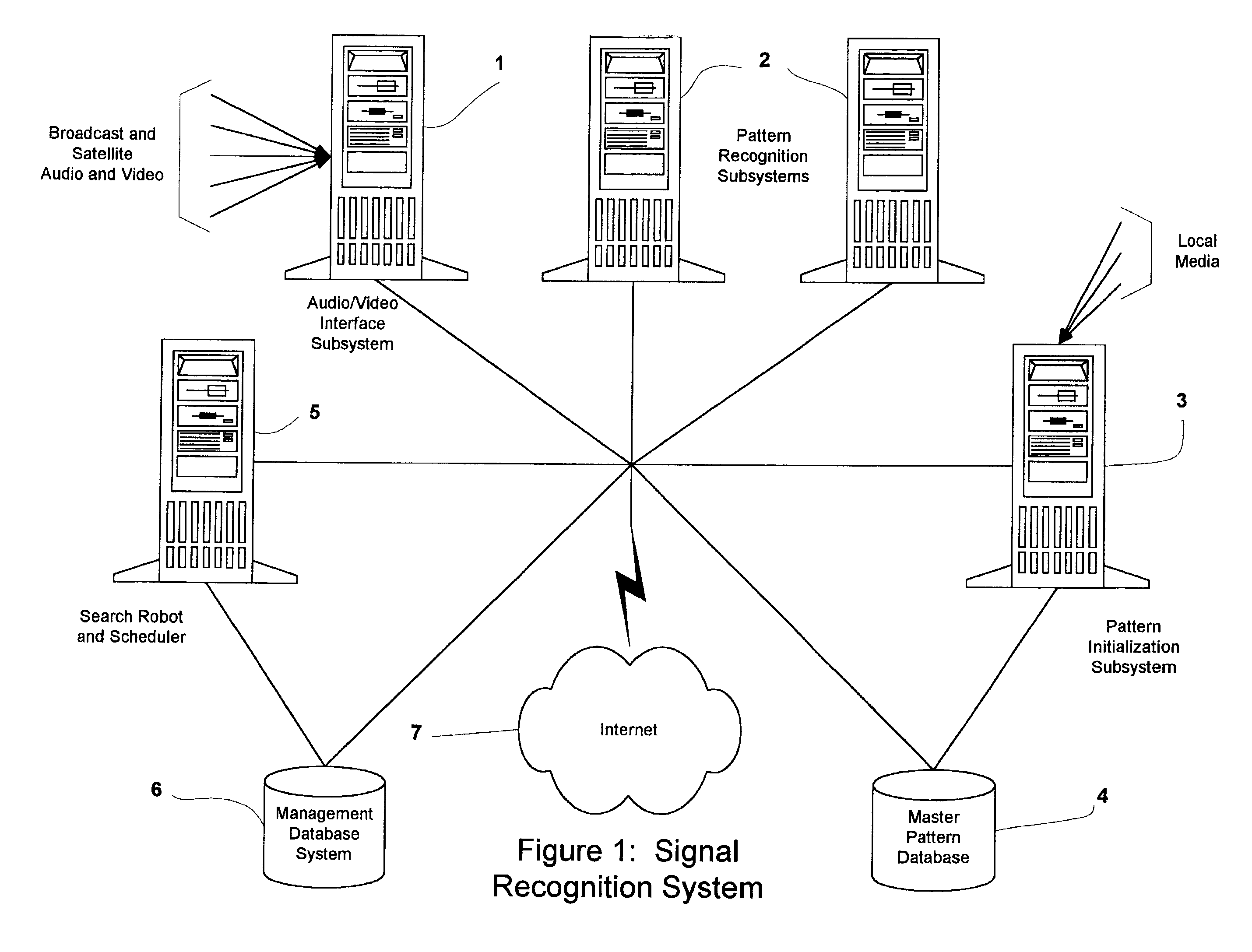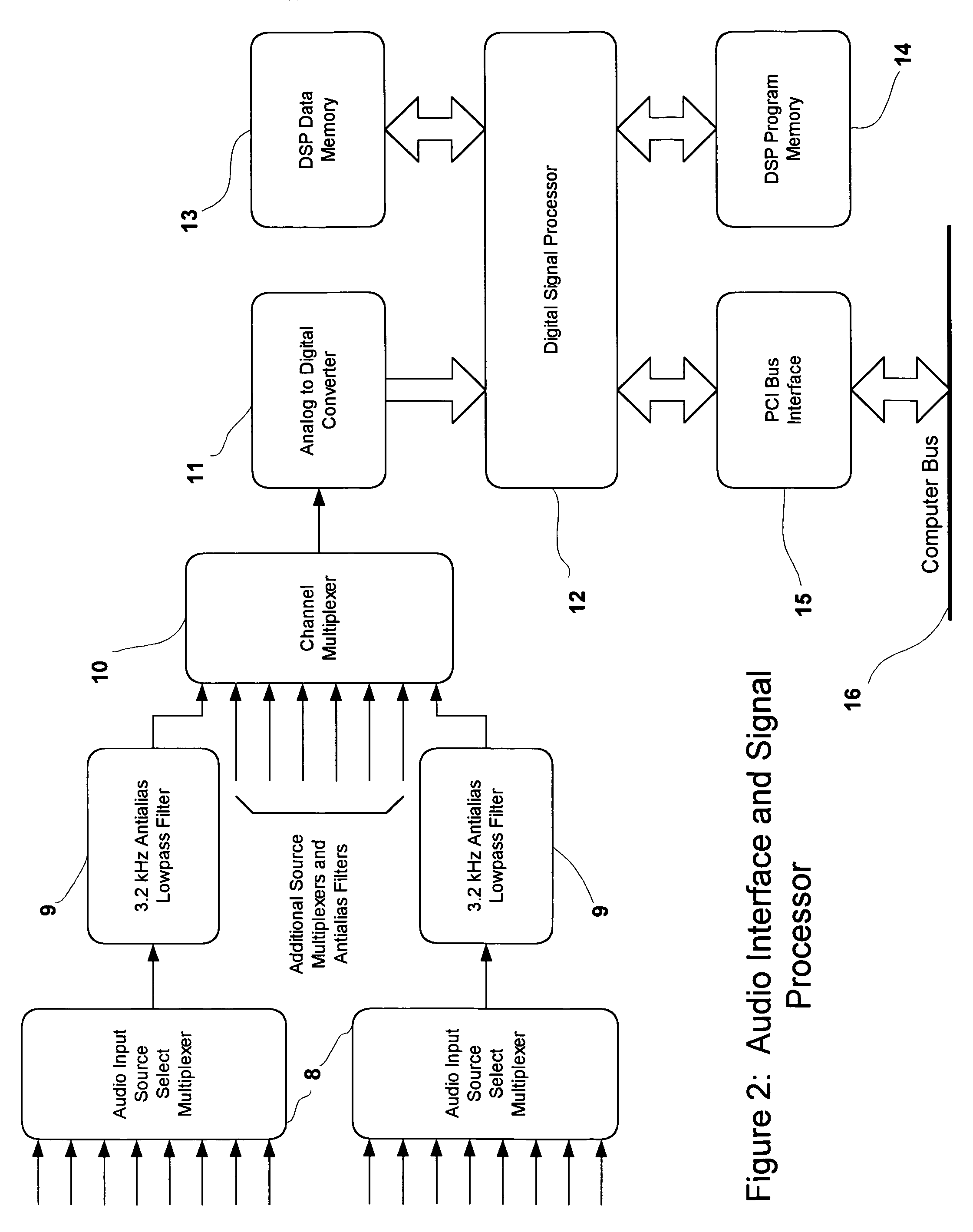Method and apparatus for automatically recognizing input audio and/or video streams
a technology of automatic recognition and applied in the field of automatic recognition of input audio and/or video signals, can solve the problems of difficulty in coding almost all existing program materials, difficulty in active systems that have been developed to date, and difficulty in coding active techniques, etc., to achieve the effect of fewer processors, minimal time, and great accuracy
- Summary
- Abstract
- Description
- Claims
- Application Information
AI Technical Summary
Benefits of technology
Problems solved by technology
Method used
Image
Examples
Embodiment Construction
1. Introduction.
[0043]The preferred embodiment of the present invention is a highly flexible signal collection and identification system that is capable of processing audio, video, multimedia signals, data signals, etc. from diverse sources. These sources include conventional broadcast, satellite distribution feeds, Internet, data distribution networks, and various subscription services. To accomplish these objectives, the preferred exemplary embodiment is configured as a distributed network of computer subsystems where each subsystem has specific functions. These subsystems can be replicated as necessary to provide the needed number of inputs and support the recognition of as many different works as desired. For example, one broadcast audio and video signal recognition station in one city may comprise one multi-channel video receiver, one multi-channel audio receiver, six audio interface computers, six video interface computers, one scheduler computer, and a mass data storage devic...
PUM
 Login to View More
Login to View More Abstract
Description
Claims
Application Information
 Login to View More
Login to View More - R&D
- Intellectual Property
- Life Sciences
- Materials
- Tech Scout
- Unparalleled Data Quality
- Higher Quality Content
- 60% Fewer Hallucinations
Browse by: Latest US Patents, China's latest patents, Technical Efficacy Thesaurus, Application Domain, Technology Topic, Popular Technical Reports.
© 2025 PatSnap. All rights reserved.Legal|Privacy policy|Modern Slavery Act Transparency Statement|Sitemap|About US| Contact US: help@patsnap.com



